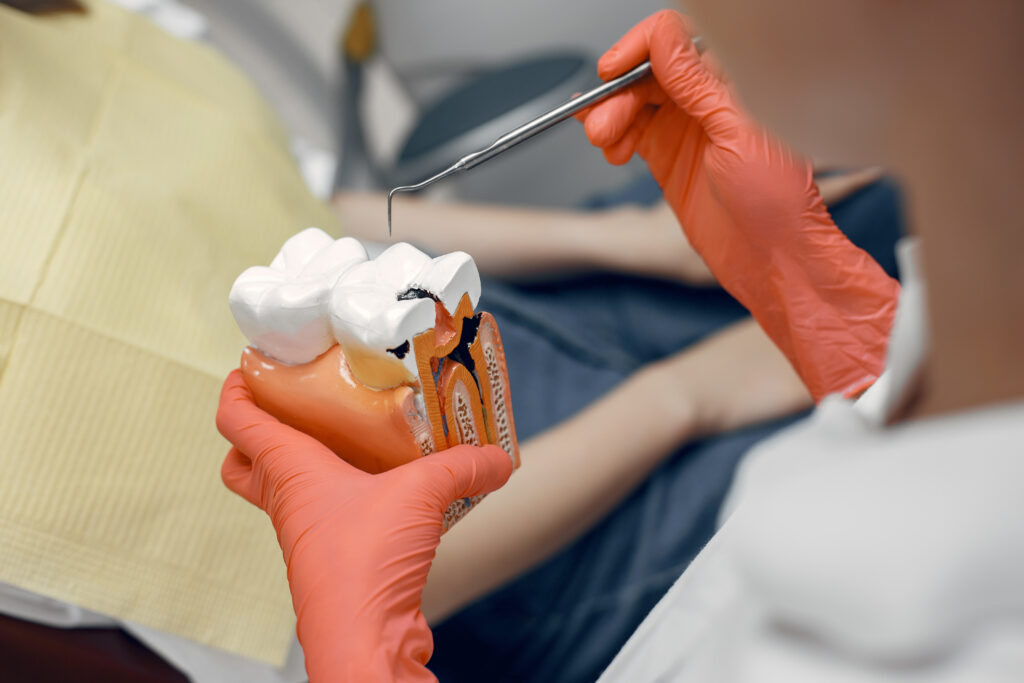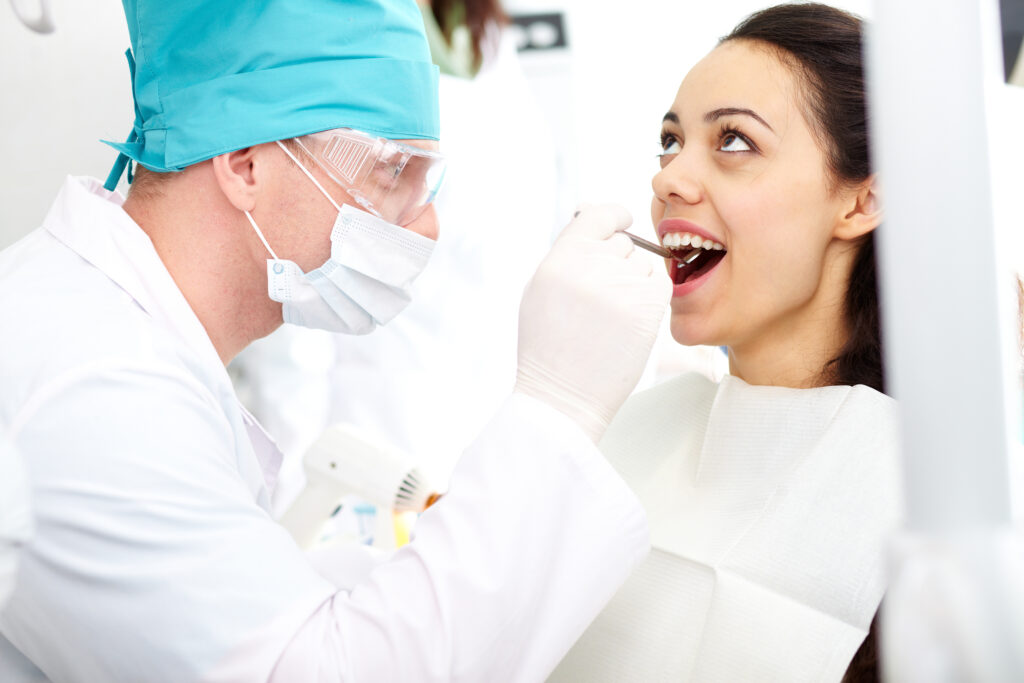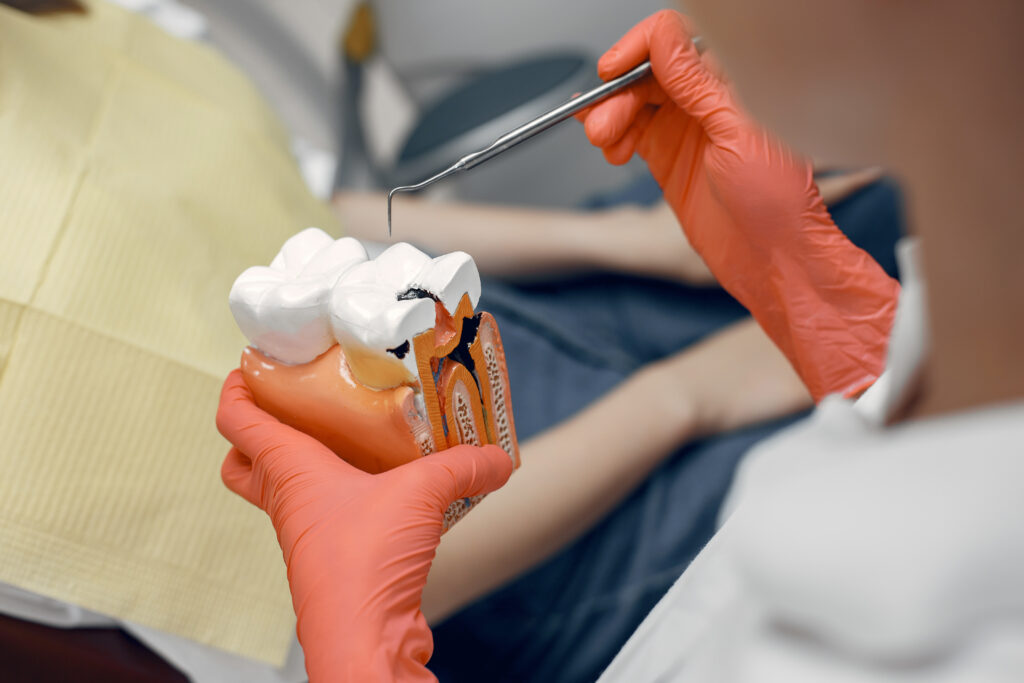Introduction
Greetings, fellow advocates of oral well-being! Let’s embark on an insightful exploration into a topic that often flies under the radar but holds significant importance for our overall health: the potential relationship between cavities and bad breath. Our mission here is to delve into the intricate interplay between these two oral concerns, shedding light on how maintaining optimal dental hygiene can not only result in fresher breath but also contribute to overall self-assurance and vitality.
Decoding the Nature of Cavities
At the core of our discussion lies the phenomenon of cavities, scientifically known as dental caries. These cavities are essentially areas of tooth decay, resulting from a complex interplay of factors including bacteria, acids, food residue, and saliva. Poor oral hygiene habits and diets high in sugary substances act as catalysts for the development of cavities, ultimately leading to the erosion of the tooth’s structure and potential discomfort.
However, let’s clarify that cavities are far from being mere cosmetic nuisances. They represent a disruption in the protective layers of the tooth, exposing the delicate inner tissues. Bacteria, particularly the species Streptococcus mutans, flourish on the sugars left behind on teeth after meals. As these bacteria feast on sugars, they produce acids that corrode the tooth’s enamel. Over time, this process creates small openings or cavities in the enamel, marking the initiation of cavities.
The Science Behind Halitosis
Now, let’s shift our focus to the intricate world of bad breath, scientifically referred to as halitosis. This common issue can cause significant social distress. It predominantly arises from the emission of foul-smelling gases by bacteria inhabiting the oral cavity. These bacteria particularly thrive on residual food particles lodged between teeth, on the surface of the tongue, and along the gum line.
On closer inspection, it becomes evident that bad breath results from microbial metabolic activities. As bacteria metabolize leftover food particles, especially those rich in carbohydrates, they release volatile sulfur compounds (VSCs) as metabolic byproducts. These VSCs, such as hydrogen sulfide and methyl mercaptan, emit a distinctive and often unpleasant odor that contributes to bad breath.
The Intricate Interplay: Cavities and Bad Breath
The intriguing connection between cavities and bad breath emerges from the symbiotic relationship between bacterial activity and dental decay. Cavities provide an ideal environment for bacterial proliferation, subsequently leading to the emission of sulfur compounds responsible for the characteristic malodor associated with bad breath. This connection underscores the significance of promptly addressing cavities.
However, it’s important to clarify that cavities themselves do not directly generate the odorous compounds responsible for bad breath. Instead, they create an environment that fosters the growth of bacteria, which in turn intensifies the production of foul-smelling VSCs. Furthermore, cavities can trap food particles, establishing a conducive environment for bacterial growth and compounding issues related to bad breath.
Factors Exacerbating Bad Breath from Cavities
Several factors contribute to the accentuated link between cavities and bad breath. These factors encompass the location and size of cavities, the specific species of bacteria involved, as well as the presence of other oral health complications. Overlooking these exacerbating elements can lead to the exacerbation of bad breath, negatively affecting both oral health and self-esteem.
The severity of bad breath can be influenced by the location of cavities. Cavities situated between teeth or within crevices are more likely to trap food particles, providing an ongoing source of nourishment for bacteria. Additionally, larger cavities can accumulate debris and bacteria more effectively, thus intensifying the production of malodorous compounds.
Moreover, the types of bacteria inhabiting cavities contribute to the variability in bad breath. Certain bacterial species excel at breaking down proteins, while others exhibit proficiency in carbohydrate metabolism. Depending on the composition of bacteria, different types of VSCs are generated, leading to varying odors.
Taking Preventive Measures
The bedrock of managing cavities and the consequent bad breath lies in prevention. Consistent and meticulous oral hygiene practices, including regular brushing, flossing, and the utilization of antimicrobial mouthwashes, play a pivotal role in curbing bacterial growth and cavity formation. Additionally, embracing a well-balanced diet low in sugars and rich in essential nutrients serves to bolster dental health, ultimately contributing to both revitalizing breath and robust teeth.
The age-old adage “prevention is better than cure” resonates profoundly in the context of cavities and bad breath. Establishing a robust oral hygiene routine stands as the primary defense against both these concerns. Brushing one’s teeth twice daily using fluoride toothpaste aids in the removal of plaque and residual food particles, effectively limiting bacterial proliferation. Equally crucial is the practice of flossing, which targets the interdental spaces inaccessible to toothbrushes.
To complement these efforts, the incorporation of antimicrobial mouthwashes can significantly enhance oral hygiene. These mouthwashes contain active agents designed to target and eliminate bacteria responsible for both bad breath and cavities. A post-brushing and flossing gargle with an antimicrobial mouthwash can effectively sustain oral freshness throughout the day.
Seeking Professional Guidance
In instances where persistent bad breath persists despite conscientious oral care, seeking professional dental counsel becomes paramount. Dental practitioners possess the expertise necessary to identify underlying issues, recommend appropriate treatment modalities, and offer guidance for refining oral hygiene routines.
Dentists, in particular, play a pivotal role in diagnosing and addressing the relationship between cavities and bad breath. A comprehensive dental evaluation serves to identify cavities, gauge the extent of bacterial activity, and provide insights into potential courses of treatment.
The Role of Optimal Oral Hygiene
Safeguarding cavities and bad breath prevention hinges on maintaining optimal oral hygiene. This encompasses the adoption of effective brushing and flossing techniques, accompanied by regular tongue cleaning, all of which contribute to the removal of bacteria and food particles. This collective effort results in improved breath quality and elevated dental well-being.
Indeed, oral hygiene practices are akin to a daily exercise regimen for your mouth. Employing fluoride toothpaste, brushing your teeth for a minimum of two minutes ensures comprehensive cleansing of tooth surfaces. Employing gentle circular motions and controlled pressure is advised to prevent harming delicate gum tissues.
Undoubtedly, flossing is a crucial element in the battle against cavities and bad breath. This practice effectively removes debris and bacteria from the spaces between teeth and along the gumline – areas inaccessible to toothbrushes. Utilizing a gentle sawing motion, carefully maneuver the floss between teeth to ensure it reaches the base of each tooth.
Nourishment’s Influence on Dental Health
The significance of dietary choices in shaping dental health cannot be overstated. The consumption of sugary and acidic foods contributes substantially to cavity development and the proliferation of bacteria. Conversely, embracing a diet rich in fruits, vegetables, and whole grains provides essential nutrients that fortify oral health, thus mitigating bad breath concerns.
It’s crucial to recognize the profound impact dietary choices exert on oral health outcomes. Sugars and refined carbohydrates, preferred by detrimental bacteria, serve as the building blocks for the development of cavities. As bacteria metabolize these sugars, they release acids that corrode tooth enamel, ultimately leading to the formation of cavities.
In stark contrast, a diet abundant in nutrient-dense foods bolsters teeth against cavity formation and bad breath. Fruits and vegetables deliver vital vitamins and minerals that bolster oral well-being, while fiber-rich foods stimulate saliva production, facilitating the natural cleansing of the oral cavity.
Exploring Home-Based Approaches
In addition to professional dental care, a range of home-based remedies can assist in managing bad breath attributed to cavities. Techniques such as oil pulling, herbal mouth rinses, and the integration of breath-freshening foods like apples and mint can contribute to the alleviation of bad breath and the maintenance of oral freshness.
Oil Pulling: An ancient practice, oil pulling involves swishing a tablespoon of edible oil (such as coconut oil) in your mouth for approximately 20 minutes before spitting it out. Advocates of this technique believe that it aids in the removal of bacteria and toxins from the oral cavity,
By embracing these holistic practices and integrating them into our daily routines, we can actively enhance our dental health and amplify our overall sense of well-being. It’s all about forging a harmonious relationship between cavities, bad breath, and the pursuit of radiant oral health.




